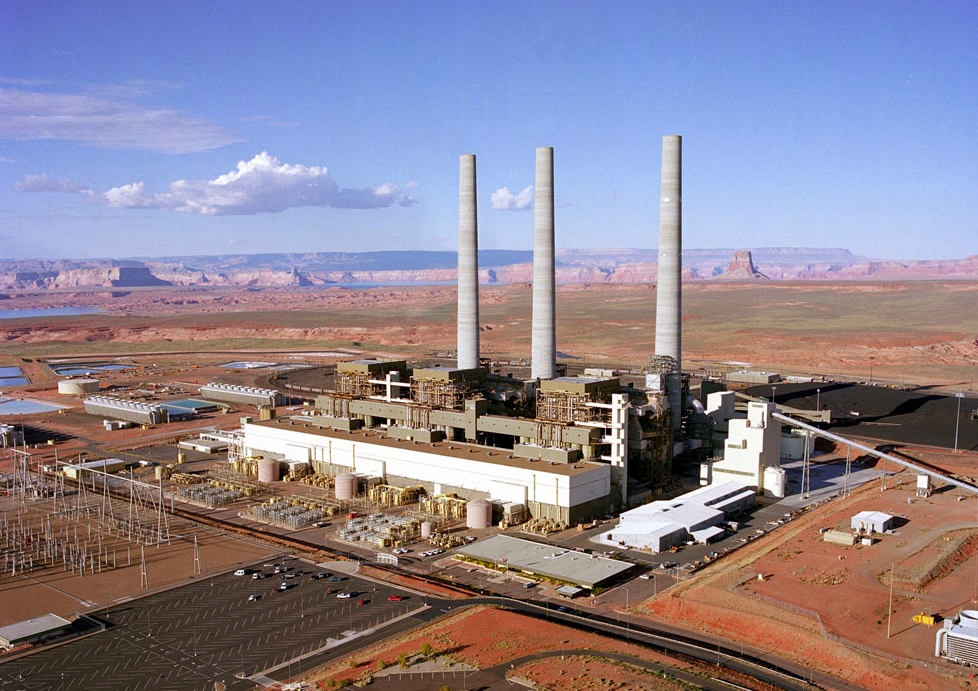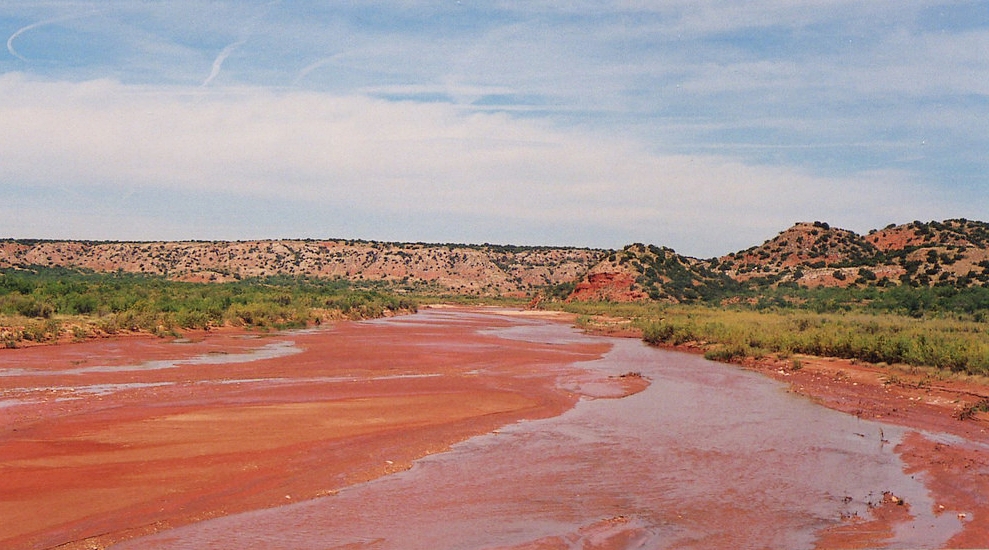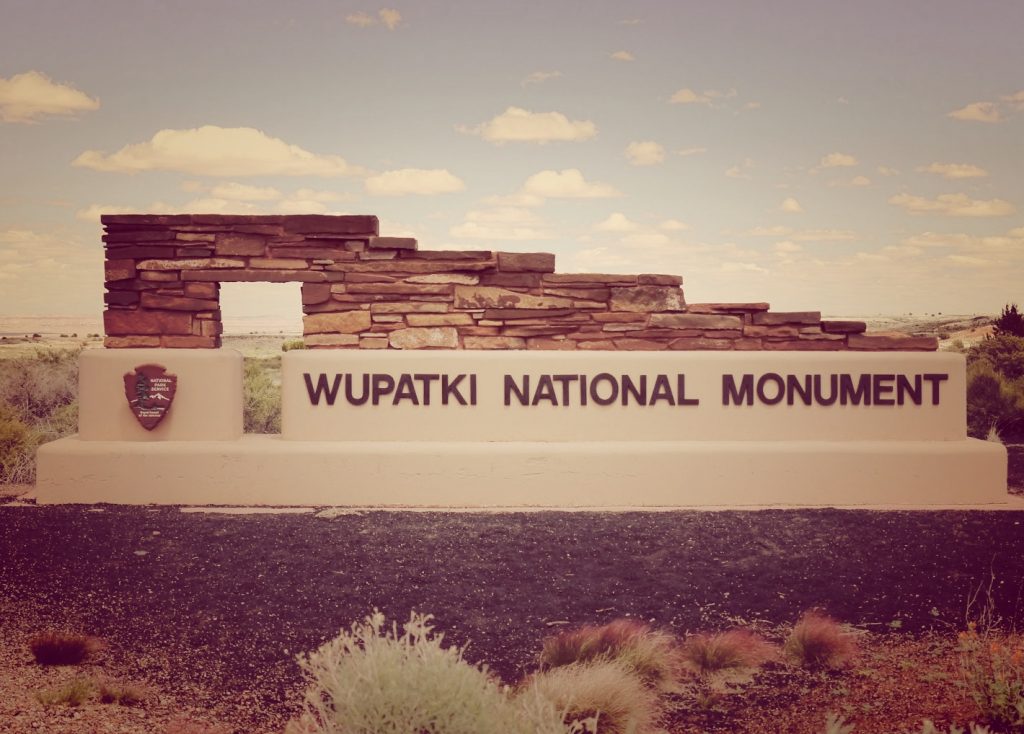The federal government could be the last, best hope to save the Navajo Generating Station, a coal-fired facility on Navajo Nation land near the Arizona-Utah border that is key to providing water for much of the region, directly supports hundreds of jobs and is the sole customer for a nearby Peabody Energy coal mine.
Ben Wolfgang
Fate of Arizona coal mine, power station and tribal economies rests with Trump administration
An aging power plant in remote Arizona could offer the Trump administration a unique opportunity: the chance to back up its rhetoric about saving the U.S. coal industry with concrete action.
The federal government could be the last, best hope to save the Navajo Generating Station, a coal-fired facility on Navajo Nation land near the Arizona-Utah border that is key to providing water for much of the region, directly supports hundreds of jobs and is the sole customer for a nearby Peabody Energy coal mine.
The Bureau of Reclamation, which owns a 24 percent stake in the project, is desperately seeking a path forward as other owners of the facility head for the exits. Those other owners — four Western utility companies — argue that the generating station is no longer economically viable and, as structured, would run at a $100 million annual loss each year after 2019.
The Navajo Nation is negotiating with the bureau and other owners to keep the plant running through 2019, when its lease expires, and then begin decommissioning. If an agreement can’t be reached, then the Navajo Generating Station could shut down this year.
Even if the plant survives and closes in 2019, the consequences will be devastating and far-reaching. The mine that feeds the plant sits on Hopi Tribe land, and the tribe depends on coal royalties for about 85 percent of its annual budget.
“That’s our lifeline. I don’t sleep very well at night. We’ve got to do something,” Hopi Chairman Herman G. Honanie told The Washington Times last week.
In addition to the job losses and financial peril for the Hopi, Peabody says the future of its Kayenta Mine is bleak without the generating plant as a customer.
Enter the Trump administration. Coal proponents say the Bureau of Reclamation, as a key part of the plant’s ownership group, can and must ensure that the plant doesn’t close and that a long-term solution would serve the interests of Western energy consumers, the Navajo and Hopi tribes, and the American coal industry.
“The consequences to the coal industry are enormous. In this instance, the federal government is an owner. If they refuse to keep a coal-fired plant open that they own, how can they encourage anyone else to do the same?” said Michael McKenna, a Republican Party strategist who worked on the Trump transition team. “If they allow this lease to be signed, this plant to close, then the rhetoric about coal from the president has been a lie. The administration has an opportunity to do something meaningful here. Words are good. Actions are better.”
The Navajo Nation says a vote could be held as early as next week on extending the generating station’s operations through 2019. They also have expressed interest in the Bureau of Reclamation taking over full ownership of the entire facility by the start of next decade — though government officials say such an arrangement would be unprecedented.
“Interior hopes that the NGS stakeholders can find a way to extend the life of the plant and the Kayenta Mine past 2019 with financially viable operations,” said Dan DuBray, a spokesman for the Bureau of Reclamation, a division of the Interior Department. “The administration has described this NGS activity as part of its commitment to the coal industry; it is one example of the many links to our economy and jobs that American mining and coal-generated energy provide. If any federal ownership of this operation were to be proposed, it would likely require new or expanded authorities that do not currently exist.”
The government’s partial ownership of the project is in and of itself a unique situation. The 2,250-megawatt plant came online in 1974, and the federal interest grew out of the need for a major power source to pump water through the region. Initial construction costs topped $650 million, not counting millions of dollars in upgrades over the years.
Interior has a 24 percent stake in the project, with various Western utilities owning the rest. Salt River Project controls 42.9 percent of the Navajo Generating Station, Arizona Public Service owns 14 percent, and NV Energy and Tucson Electric Power own 11.3 percent and 7.5 percent, respectively.
The utilities announced in February that they would pull out of the project post-2019, arguing that the rise of U.S. natural gas has left coal-fired facilities such as the Navajo Generating Station at a massive disadvantage in the marketplace.
“The major issue surrounding this plant — and it’s industrywide — is economics,” said Scott Harelson, a spokesman for Salt River Project. “To be quite frank, we were probably working a little bit against reality trying to figure out how can we still make Navajo work. Those are our employees. We’ve operated that plant for a long time. It’s important to that area, and we realize that.
“Ultimately, it became clear it just was not going to be economical,” he said. “It was too expensive to operate.”
Mr. Harelson said the ideal outcome for the utilities is to run the plant through 2019 and then maintain access to the site for decommissioning and cleanup. The Navajo Nation, meanwhile, has expressed interest in possibly building solar panels or other renewable energy projects in the same area and taking advantage of the electricity infrastructure already there.
But such a scenario, if it comes to pass, would be a high-profile defeat for the coal industry. Peabody says it has already offered a long-term fixed price for the coal that feeds the plant, and it has released economic studies that it says prove the plant can, in fact, compete with any other power generation source on the market today.
“Peabody has come to the table with a fixed coal price proposal representing a competitive fuel cost versus alternate generation sources,” said Peabody spokeswoman Beth Sutton. “Study findings confirm our belief that NGS is economically viable and provide momentum for stakeholders to continue working toward solutions that will allow NGS operations for many years.”
Supporters of the facility say that despite the legal and logistical challenges, the administration, if it’s serious about aiding the coal industry, should consider stepping in as full owner once utilities officially pull out and could cut more regulations that would allow the Navajo Generating Station to operate more economically.
“If the United States [government] really wants to put their money where their mouth is, they’ll say we’ll stay in as owner and start removing these red tape regulations,” said Mark Lewis, a board member of the Central Arizona Project, which depends on the generating station for the vast majority of power needed to pump water through its 336-mile water delivery system.
Free Range Report
[wp_ad_camp_3]




I completely support keeping all the coal mines and coal fired power plants open and producing, but at the same time I wonder how many members of these two Indian tribes voted for President Trump.
Since most reservation Indians are Democrats on the government sugar tit I submit that few voted Republican, making their pleas for help both hypocritical and disingenuous.